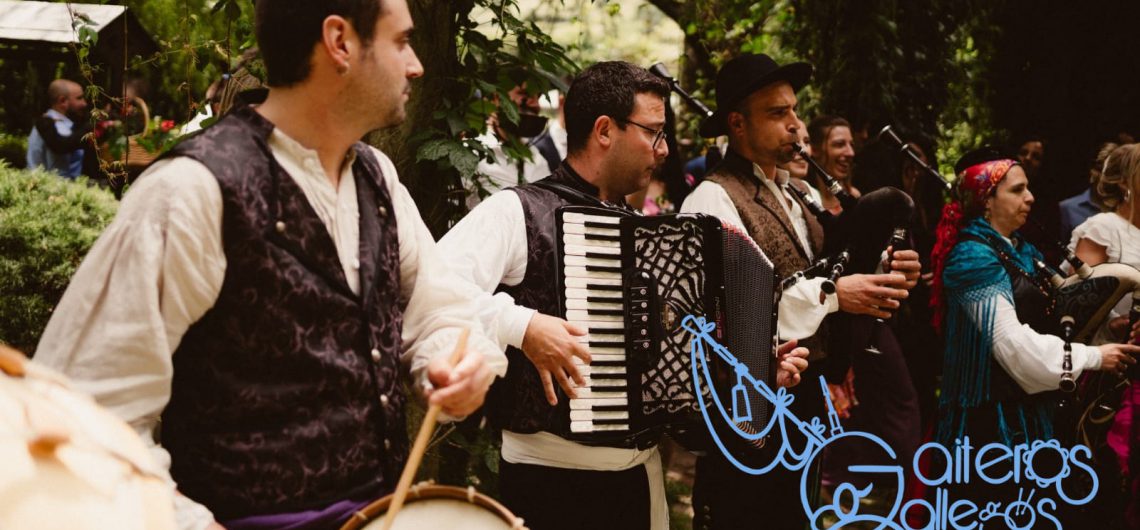To celebrate Galician folklore is to embrace a rich and vibrant legacy that connects us to our roots and traditions. It is a source of pride to preserve and share Galicia’s cultural diversity, from its music and dances to its festivals and crafts, which together weave the vibrant tapestry of our identity.
The folklore of Galicia is very varied, we can find a multitude of musical forms that are usually accompanied by traditional dances. The most primitive song known is the Alalá, which is performed unaccompanied by instruments. On the other hand, the most characteristic Galician rhythm is the Muñeira, although we would also like to highlight other musical forms such as the Alborada, the Pasacalles and Marches, the Pandeiradas, the Pasodobles, the Polkas, the Jotas and the Cantos.
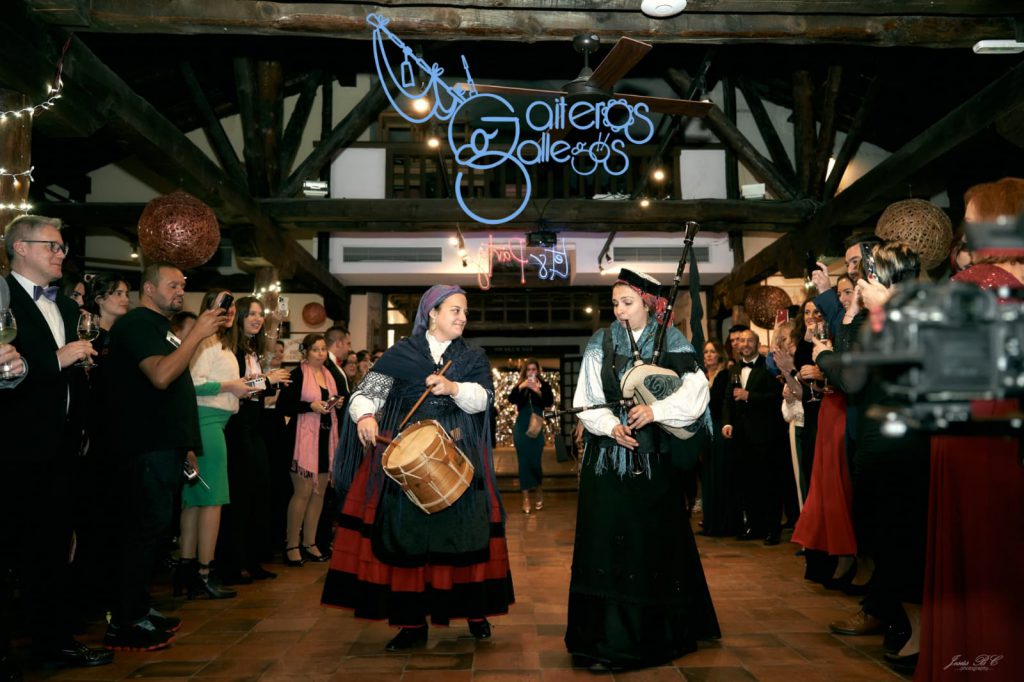
- Alalá: it consists of an arrhythmic chant composed of octosyllabic couplets and is related to Gregorian chant.
- Muñeira: there are two types, the muñeira vella and the muñeira nova, the first is characterized by being sung and the second is only instrumental.
- Alborada: they generally lack lyrics and their origin is attributed to the Celts and their religious rites to the sun.
- Pasacalles and Marches: they are typical compositions to play while marching through the streets. Within the marches, religious marches stand out, such as processional marches.
- Pandeiradas: singing accompanied by tambourines and other percussion instruments.
- Pasodobles: This rhythm is one of the most widespread throughout Spain and, therefore, also in Galicia, taking a new form when played on the bagpipe.
- Polkas: it spread throughout Galicia mainly in the 19th century, coming from Europe.
- Jotas: another of the most widespread rhythms in Spain, mainly in Castile and Leon.
- Songs: songs interpreted with the voice and that are characteristic of certain times of the year (Christmas, Mayos, …), for social events (weddings, rounds, …) or songs of offices.
In many of these traditional rhythms we find instruments such as the bagpipe and the tambourine. It is worth mentioning that, when thinking about the territory of Galicia, the Galician bagpipes and their ancestral melodies come to mind.
Therefore, we want to give the importance it deserves to this special instrument and to the pipers who maintain this tradition.
Gaiteros Gallegos (Galician bagpipers)
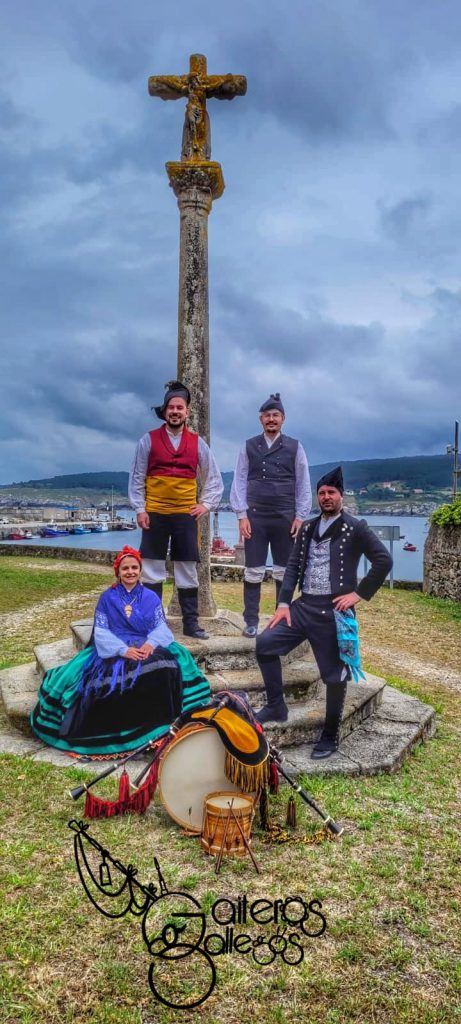
Gaiteros gallegos is a formation of traditional music created in 1990 in A Coruña, by Tania Fernandez, with the aim of bringing Galician folklore to all kinds of events, initially formed as a quartet of traditional music, currently offers different formations and shows, which allows them to develop their work of dissemination of Galician culture throughout Spain, always focused on traditional music and Galician culture.
Clothing and instruments
Their costumes consist of Galician gala costumes, and the instruments they use are mainly Galician bagpipes, drums, tambourine and bass drum.

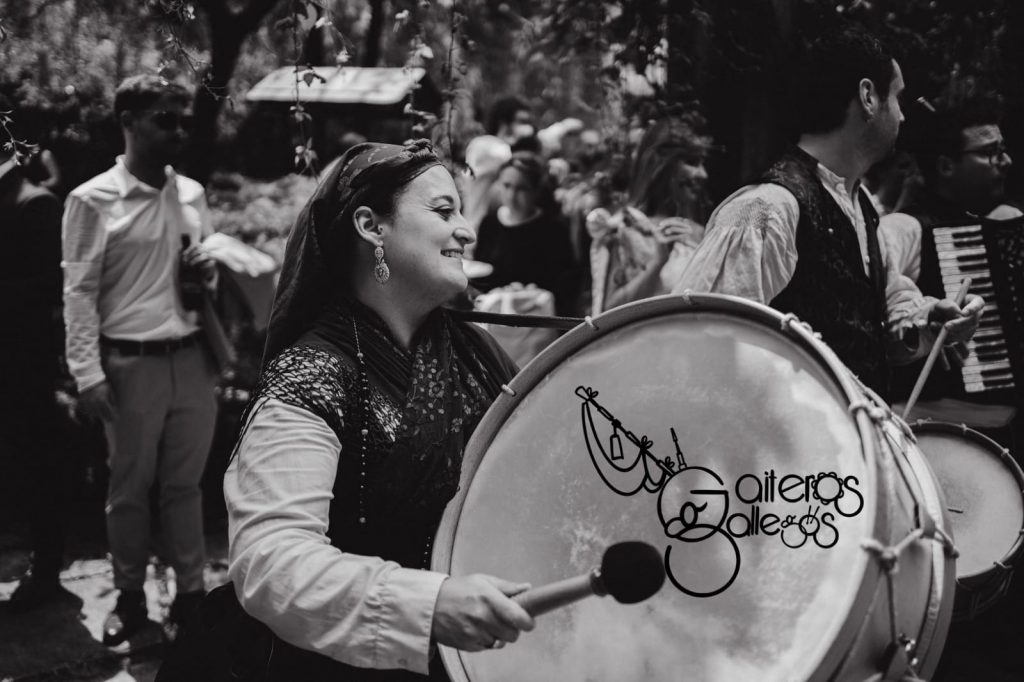

Shows
They are a formation specialized in weddings and events with national coverage.
Among the shows they offer, in addition to traditional music formats, quartets, or more numerous formats, they offer formations of pandereteiras and cantereiras (female musical group, whose only instrument is the tambourine and his voice), or dance couple, with the aim that traditional music accompanies and gives color to any moment of the ceremony or event.
In addition, his dance group also performs the Baile de Regueifa, a traditional Galician dance derived from the ancient muiñeira. It was danced at weddings, and was generally a dance performed by the bride and groom or godparents, to distribute a loaf of bread (the regueifa) among the guests. In this way the couple was presented and accepted in society.
They also perform didactic concerts for children in schools and educational centers, to bring the children closer to the instruments, traditions and Galician culture.
Another of the shows they offer is the realization of dramatized queimadas, where after making the traditional conxuro, and tasting, they enliven the show with traditional music. While the fire manages to purify the liquor, all the assistants will help to make the conxuro, in order to expel all the “meigas” and bad spirits.
Finally, among the many services offered we can find an exclusive service of reception of pilgrims on arrival at the Plaza del Obradoiro at the end of the Camino de Santiago, formations of Asturian pipers, and interpretations of medieval, baroque and golden century music.

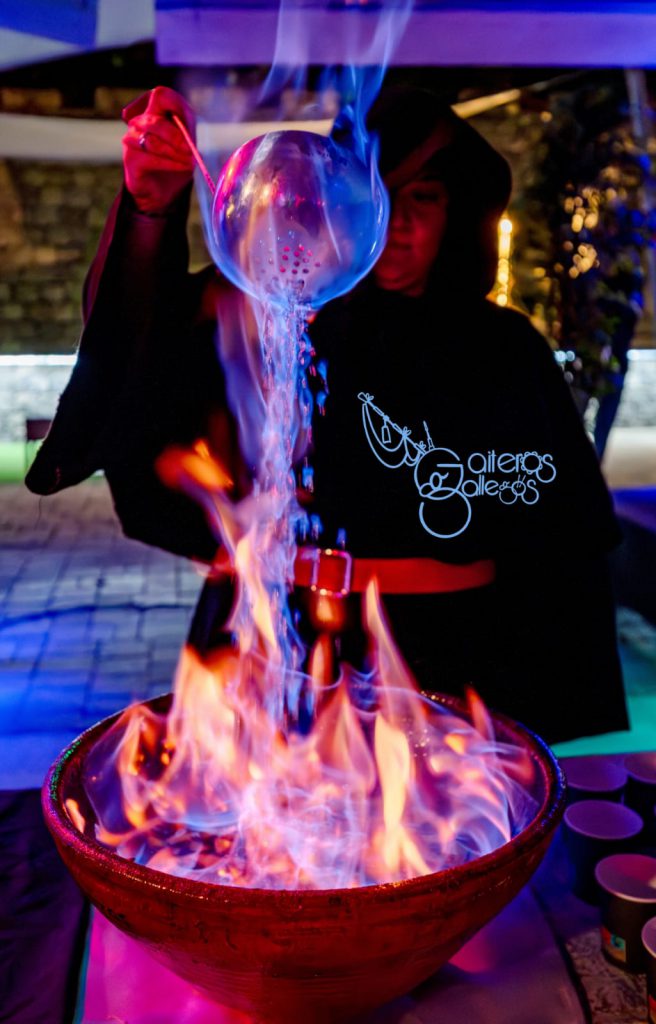
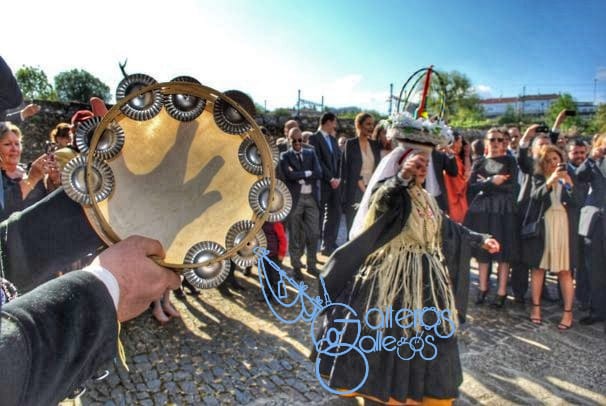
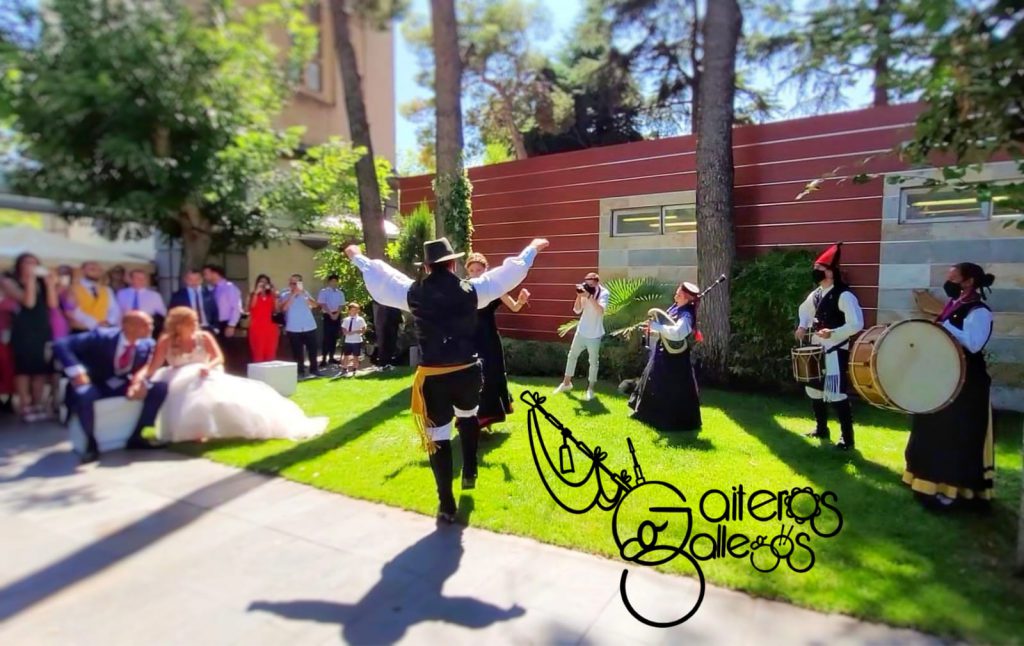
Contact Gaiteros Gallegos:
- www.gaiterosgallegos.com
- E-mail: gaiterosgallegos@gmail.com
- +34 611 10 71 17
- Instagram: @gaiterosgallegos
- YouTube: Gaiteros Gallegos

